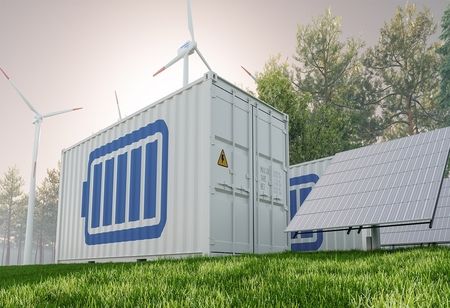
Government to Provide Rs 5,400 Crore for Battery Energy Storage Systems

 Manohar Lal, the union minister of electricity, announced that the government will provide an extra Rs. 5,400 crore in viability gap funding (VGF) to install 30 GWh of battery energy storage systems (BESS). Reports claim that the minister outlined a number of initiatives to fulfill India's growing need for electricity and reach the country's ambitious 2070 net zero goal.
Manohar Lal, the union minister of electricity, announced that the government will provide an extra Rs. 5,400 crore in viability gap funding (VGF) to install 30 GWh of battery energy storage systems (BESS). Reports claim that the minister outlined a number of initiatives to fulfill India's growing need for electricity and reach the country's ambitious 2070 net zero goal.
The reward will be in addition to the ₹3,700 crore VGF incentive that is already being used to implement 13.2 GWh of BESS.
Renewable energy sources like solar and wind are sporadic, and by 2030, India wants to have 500 GW of non-fossil capacity.
It is anticipated that storage technologies, such as BESS and pump storage plants (PSP), will be crucial in maintaining grid and power supply stability.
By 2032, the nation's energy storage market is anticipated to draw ₹4.79 trillion in investment, according to the India Energy Storage Alliance, an industry association.
By FY32, the CEA projects that 411.4 GWh of energy storage systems will be needed (175.18 GWh from PSP and 236.22 GWh from BESS).
Lal added that the Indian power system's firewalls effectively stopped a number of cyberattacks that targeted the nation's power sector, particularly the state load dispatch centers (SLDC), during the recent conflict with Pakistan.
Furthermore, the minister stated that the Center has recommended states that are not in Seismic zone 5 (Very High Damage Risk Zone due to earthquakes) to establish nuclear power projects.
Also Read: WAVES 2025: Burgeoning India's Orange Economy
This is in line with the government's goal to increase nuclear energy in the nation in order to increase the base load capacity to maintain grid stability amid rising renewable energy capacity. India plans to increase its installed nuclear power capacity from its current 8 GW to 22 GW by 2032 and 100 GW by 2047.
The power minister also said that the government has chosen to mandate a range of air conditioner temperatures and standardize them nationwide.